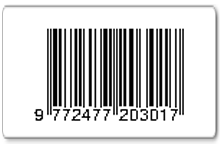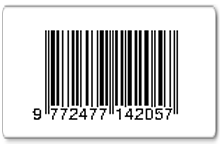The Urgency of STEM Education in Indonesia
Abstract
Industry 4.0 and 21st-century skills are quickly increasing and becoming more knowledgeable. In this century, the primary purpose of our educational system should be to prepare students to live in the world. STEM Education has garnered increasing attention in recent years, and it is important to comprehend STEM Education. Indonesia is one of the largest countries in Southeast Asia with a vast number of human resources that need to be developed. The purpose of this study was to investigate the urgency of STEM education in Indonesia within the scope of 21st-century skill categories using the content analysis method, to investigate best practices of STEM education for teachers by investigating engineering design skills training, and to review the literature from 1990 to 2016 that has focused on the development of STEM education around the world. The data demonstrated that STEM Education has grown over the world and has a significant influence on students' idea comprehension, literacy, and creativity. Many studies show that the best strategy for science teachers is to incorporate STEM education. STEM is relevant to everyday life and improve student performance. These findings are important to be implemented in Indonesia for STEM Education implementation in Indonesia
Keywords
Full Text:
PDFReferences
Austin, J D, Hirstein, J, & Walen, S 1997, ‘Integrated mathematics interfaced with science’, School Science & Mathematics, vol. 97, no. 1, pp. 45-49.
Barrett, B S, Moran, A L, & Woods, J E, 2014, Meteorology meets engineering: an interdisciplinary STEM module for middle and early secondary school students’, International Journal of STEM Education, vol. 1, no. 1, pp. 6-11.
Berry, B, Montgomery, D, Rachel, C, Hernandez, M, Wurtzel, J, & Snyder, J 2008, ‘Creating and sustaining urban teacher residencies: A new way to recruit, prepare, and retain effective teachers in high-needs districts’, Aspen Institute.
Blömeke, S, Suhl, U, Kaiser, G, & Döhrmann, M 2012, ‘Family background, entry selectivity and opportunities to learn: What matters in primary teacher education? An international comparison of fifteen countries’, Teaching and Teacher Education, vol. 28, pp. 44–55.
Blumenfeld, P C, Soloway, E, Marx, R W, Krajcik, J S, Guzdial, M, & Palincsar, A 1991, ‘Motivating project-based learning: Sustaining the doing, supporting the learning’, Educational Psychologist, vol. 26, no. 3/4, pp. 369–398.
Blumenfeld, P, Fishman, B, Krajcik, J, Marx, R, & Soloway, E 2000, ‘Creating useable innovations in systemic reform: Scaling-up technology-embedded project-based science in urban schools, Educational Psychologist, vol. 35, no. 3, pp. 149–164.
Butcher, D 2013, ‘Outlook for STEM professionals is robust and moving beyond traditional occupations’
Burke, L, Francis, K, & Shanahan, M 2014, ‘A horizon of possibilities: a definition of STEM education’ McIntyre: Vancouver.
Bybee, R B 2013, ‘The case for STEM education: Challenges and Opportunities’, Arlington: National Science Teachers Association, NSTA Press.
Czerniak, C M, Weber, W B, Sandmann, A, & Ahern, J 1999, ‘A literature review of science and mathematics integration’, School Science & Mathematics, vol. 99, no. 8, pp. 421-430.
Costa, M J 2013, ‘What does ‘student-centered’ mean and how can it be implemented? A systematic perspective’, Biochemistry and Molecular Biology Education, vol. 41, no. 4, pp. 267–268.
Ejiwale, J A 2012, ‘Facilitating teaching and learning across STEM fields’, Journal of STEM Education, vol. 13, no. 3, pp. 87-94.
Erlandson, C, & McVittie, J 2001, ‘Student voices on integrative curriculum’, Middle School Journal, vol. 33, no. 2, pp. 28-36.
Farwati, R, Permanasari, A, Firman, H, & Suhery, T 2017, ‘Integrasi Problem based learning dalam STEM education berorientasi pada aktualisasi literasi lingkungan dan kreativitas’, Prosiding seminar nasional pendidikan IPA, Palembang.
Farwati, R, Suhery, T, Permanasary, A, & Firman, H 2018, ‘Integration of Science, Technology, Engineering and Mathematics: The Multidisciplinary Approach to Enhance the Environmental Literacy of Prospective Chemistry Teachers’, Bulgarian Journal of Science Education.
Farwati, R, Metafisika, K, Sari, I, Sitinjak, D S, Solikha, D F, & Solfarina, S 2021, ‘STEM Education Implementation in Indonesia: A Scoping Review’, International Journal of STEM Education for Sustainability, vol. 1, no. 1, pp. 11-32.
Fitriani, D N, Kaniawati, I, & Ramalis, T R 2017, ‘Creativity of junior high school’s students in designing earthquake resistant buildings’, IOP Conf. Series: Journal of Physics: Conf. Series 895
Fraenkel, J R, Wallen, N E, & Hyun, H H 2012, ‘How to design and evaluate research in education’.
Gningue, S M, Peach, R, & Schroder, B 2013, ‘Developing effective mathematics teaching: Assessing content and pedagogical knowledge, student-centered teaching, and student engagement’, Mathematics Enthusiast, vol. 10, no. 3, pp. 621–646.
Goldsmith, L, Doerr, H, & Lewis, C 2014, ‘Mathematics teachers’ learning: A conceptual framework and synthesis of research’, Journal of Mathematics Teacher Education, vol. 17, pp. 5–36.
Guzey, S S, Moore, T J, Harwell, M, & Moreno, M 2016, ‘STEM Integration in Middle School Life Science: Student Learning and Attitudes’, Journal of Science Education and Technology, vol. 25, no. 4, pp. 550-560.
Hernandez, P R, Bodin, R, Elliott, J W, Ibrahim, B, Rambo-Hernandez, K-E., Chen, T-W, & de Miranda, M-A 2014, ‘Connecting the STEM dots: measuring the effect of an integrated engineering design intervention’, International Journal of Technology and Design Education, vol. 24, no. 1, pp. 107- 120.
Hinde, E T 2005, ‘Revisiting curriculum integration: A fresh look at an old idea’, The Social Studies, vol. 96, no. 3, pp. 105-111.
Honey, M, Pearson, G, & Schweingruber, A 2014, ‘STEM integration in K-12 education: status, prospects, and an agenda for research’, Washington: National Academies Press
Hsu, Y 2008, ‘Learning about seasons in a technologically enhanced environment: The impact of teacher-guided and student-centered instructional approaches on the process of students’ conceptual change’, Science Education, vol. 92, no. 2, pp. 320–344.
Jansen, B 2011, ‘Inquiry unpacked: An introduction to inquiry-based learning’, Library Media Connection, vol. 29, no. 5, pp. 10–12.
Jauhariyyah, F R, Suwono, H, & Ibrohim 2017, ‘Science, Technology, Engineering, and Mathematics Project Based Learning (STEM-PjBL) pada Pembelajaran sains’, Pros. Seminar pend. IPA Pascasarjana UM
Kelley, T R, & Knowles, J G 2016, ‘A conceptual framework for integrated STEM education’, International Journal of STEM Education, vol. 3, no. 1, pp. 1-11.
Kersting, N B, Givvin, K B, Thompson, B J, Santagata, R, & Stigler, J W 2012, ‘Measuring usable knowledge: Teachers’ analyses of mathematics classroom videos predict teaching quality and student learning’, American Educational Research Journal, vol. 49, pp. 568–589.
King, D, & English, L D 2016, ‘Engineering design in the primary school: applying stem concepts to build an optical instrument’, International Journal of Science Education, vol. 38, no. 18, pp. 2762-2794.
Marulcu, I, & Barnett, M 2016, ‘Impact of an engineering design-based curriculum compared to an inquiry-based curriculum on fifth graders’ content learning of simple machines’, Research in Science & Technological Education, vol. 34, no. 1, pp. 85-104.
McKinsey 2016, ‘STEM Education in the Irish System School’, A report of STEM Education. Irish
Moreno, N P, Tharp, B Z, Vogt, G, Newell, A D, & Burnett, C A 2016, ‘Preparing Students for Middle School Through After-School STEM Activities’, Journal of Science Education and Technology, vol. 25, no. 6, pp. 889-897.
Moore, T J, & Smith, K A 2014, ‘Advancing the state of the art of STEM integration’, Journal of STEM Education: Innovations and Research, vol. 15, no. 1, pp. 5-10.
Motschnig-Pitrik, R, & Holzinger, A 2002, ‘Student-centered teaching meets new media: Concept and case study’, Educational Technology & Society, vol. 5, no. 4, pp. 160–172.
Nurlaely, N, Permanasari, A, & Riandi, R 2017, ‘Student’s STEM literacy in biotechnology learning at junior high school’, IOP Conf. Series: Journal of Physics: Conf. Series 895
Otero, V K, & Gray, K E 2008, ‘Attitudinal gains across multiple universities using the physics and everyday thinking curriculum’, Phys Rev Spec Top-PH, vol. 4, no. 2
Park, S H, & Ertmer, P A 2008, ‘Impact of problem-based learning (PBL) on teachers’ beliefs regarding technology use’, Journal of Research on Technology in Education, vol. 40, no. 2, pp. 247–267.
Prima, E C. et al 2018, ‘STEM learning on electricity using Arduino-phet based experiment to improve 8th grade students’ STEM literacy’ journal physics: conference series 1013012030
Russell, M, O’Dwyer, L, Bebell, D, & Miranda, H 2004, ‘Technical report for the USEIT study’, Boston, MA: Boston College, Technology and Assessment Study Collaborative.
Sanders, M 2009, ‘STEM, STEM education, STEM mania’, The Technology Teacher, vol. 68, no. 4, pp. 20-26.
Sejati, B K, Firman, H, & Kaniawati, I 2017, ‘STEM-Based workbook: enhancing students’ STEM competencies on lever system’, AIP conference proceedings, pp. 2848
Savery, J R 2006, ‘Overview of problem-based learning: Definitions and distinctions’, Interdisciplinary Journal of Problem- Based Learning, vol. 1, no. 1, pp. 9–20.
Schnittka, C G, Evans, M A, Won, S G L, & Drape, T A 2016, ‘After-School Spaces: Looking for Learning in All the Right Places’, Research in Science Education, vol. 46, no. 3, pp. 389-412.
Shulman, L S 1987, ‘Knowledge and Teaching: Foundations of the New Reform, Harvard Educational Review, vol. 57, pp. 1-22.
Suwarma, I R, Firman, H, & Rustaman, N Y 2015, ‘The development of technology and engineering literacy through STEM-based education’, International Conference on Innovation of Engineering and Vocational Education. Atlantis Press.
Suwarma, I R, 2016, ‘Pengaruh pembeljaran berbasis STEM pada konsep tekanan hidrostatis terhadap causal reasoning siswa SMP’, Prosiding seminar nasional fisika.
Tati, T, Firman, H, & Riandi, R 2017, ‘The effect of STEM learning through the project of designing boat model toward student STEM literacy’, IOP Conf. Series: Journal of Physics Conf. Series 895.
Tsupros, N, Kohler, R, & Hal linen, J 2009, ‘STEM education: A project to identify the missing components’, Intermediate Unit 1and Carnegie Melon, Pennsylvania.
Verma, A K, Dickerson, D, & McKinney, S 2011, ‘Engaging students in STEM careers with project-based learning: Marine Tech project’, Technology and Engineering Teacher, vol. 71, no. 1, pp. 25–31.
Vilorio, D 2014, ‘STEM 101: Intro to tomorrow’s jobs’, Occupational Outlook Quarterly, viewed 1 june 2021.
Weimer, M 2013, ‘Learner-centered teaching: Five key changes to practice (2nd ed.)’, San Francisco, CA: Jossey-Bass.
Wright, G B 2011, ‘Student-centered learning in higher education’, International Journal of Teaching and Learning in Higher Education, vol. 23, no. 3, pp. 92–97.
Wendell, B K, & Rogers, C 2013, ‘Engineering Design-Based Science, Science Content Performance, and Science Attitudes in Elementary School’, Journal of Engineering Education, vol. 102, no. 4, pp. 513-540.
Wright, V H, & Wilson, E K 2011, ‘Teacher’s use of technology: Lessons learned from the teacher education program in the classroom’, Southeastern Regional Association of Teacher Educators (SRATE) Journal, vol. 20, no. 2, pp. 48–60.
Yanyan, L, Zhinan, H, Menglu, J, & Ting-Wen, C 2016, ‘The Effect on Pupil's Science Performance and Problem-Solving Ability through Lego: An Engineering Design-based Modeling Approach’, Journal of Educational Technology & Society, vol. 19, no. 3, pp. 143-156.
DOI: http://dx.doi.org/10.30870/jppi.v7i2.5979
Refbacks
- There are currently no refbacks.
Copyright (c) 2021 Jurnal Penelitian dan Pembelajaran IPA

This work is licensed under a Creative Commons Attribution 4.0 International License.
Jurnal Penelitian dan Pembelajaran IPA is licensed under a Creative Commons Attribution 4.0 International License
Copyright © 2025 Jurnal Penelitian dan Pembelajaran IPA. All rights reserved.






